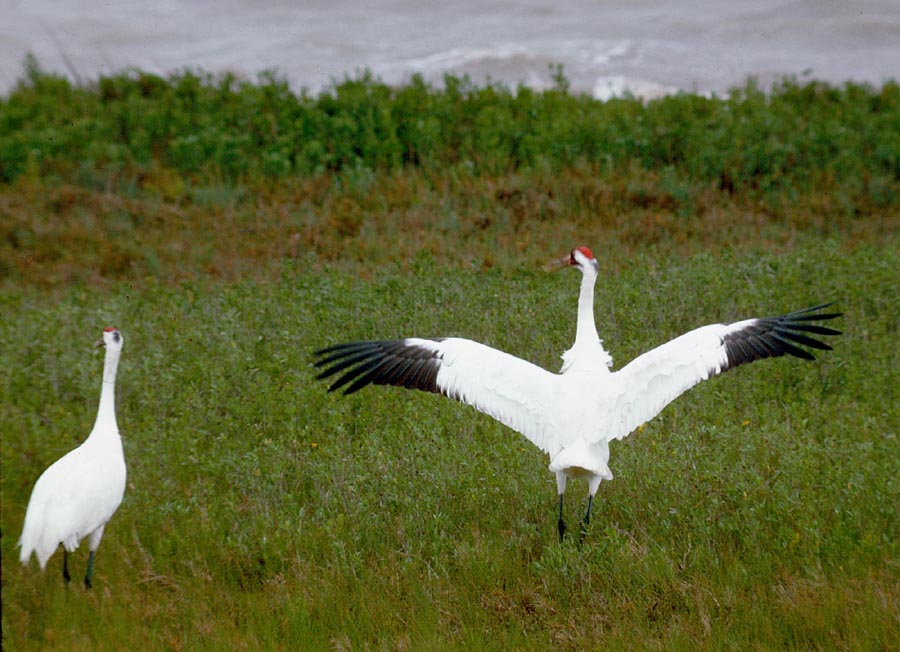Whooper Week: Protections Since 1941
This is Passport to Texas’…Whooper Week.
Pushed to the brink of extinction by unregulated hunting and loss of habitat, federal and state protections on Whooping Crane breeding and wintering grounds were enacted in 1941 to save the remaining 21 wild birds.
And we’ve steadily seen those whooping crane numbers come up farther and farther and farther. And currently now, when we look at Aransas national Wildlife Refuge on the coast of Texas, it is one of the major whooping crane birding spots in the world now.
Biologist, Shaun Oldenburger says the flock is currently 300 strong; it took a coordinated effort between the US and Canada to reach that number.
If we look back in the 1940s, the US Fish and Wildlife Service purchased Aransas National Wildlife Refuge – which was the major wintering grounds at the time for the last population that we had here in North America. Their breeding grounds also became a national park through Canada. Wood Buffalo National Park. And, also along through the migration corridor, there’s also been protections and closures of hunting seasons in the past, and just doing lots of activities and education to make sure that those birds succeed in spring and fall migration from their wintering and breeding grounds.
More about this iconic species tomorrow when Passport to Texas Whooper Week continues.
The Wildlife Restoration program supports our series.
For Texas Parks and Wildlife, I’m Cecilia Nasti.



 Passport to Texas is a
Passport to Texas is a  Passport to Texas is made available by:
Passport to Texas is made available by: